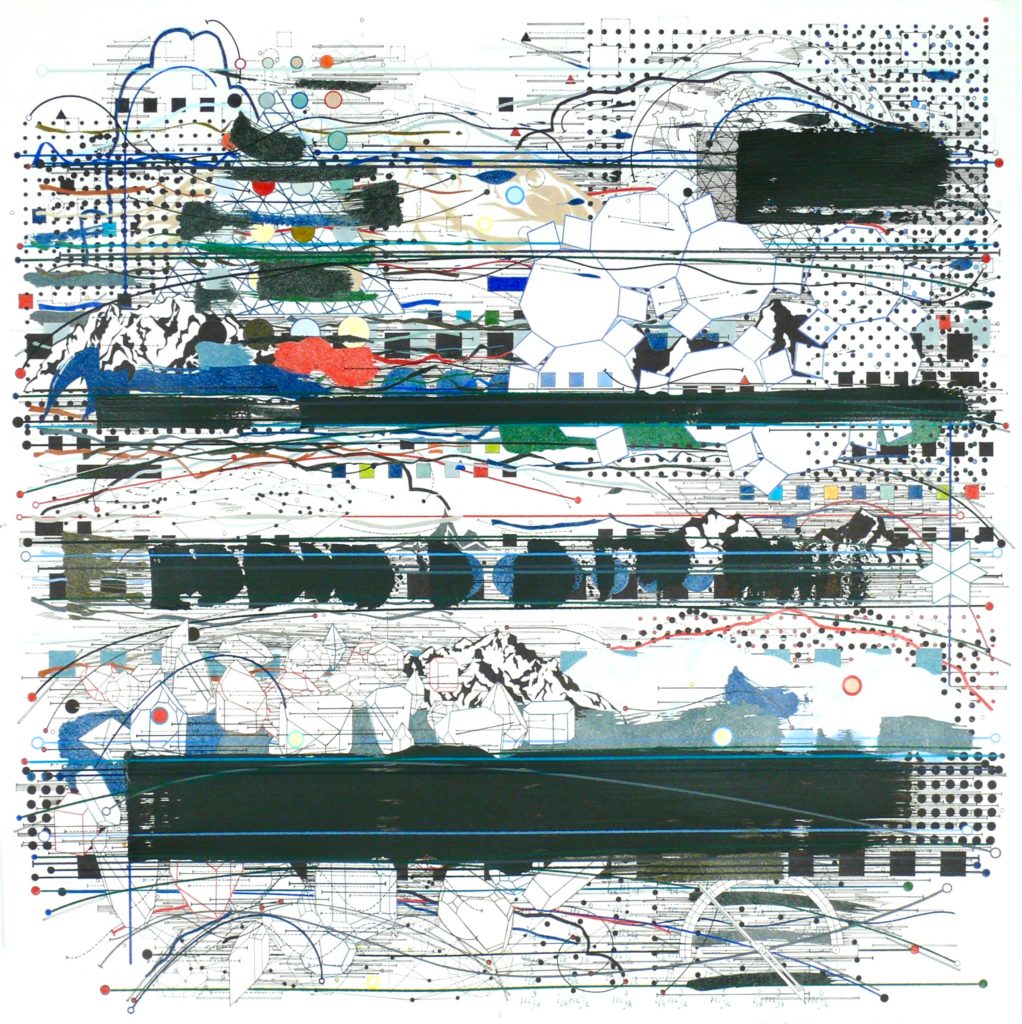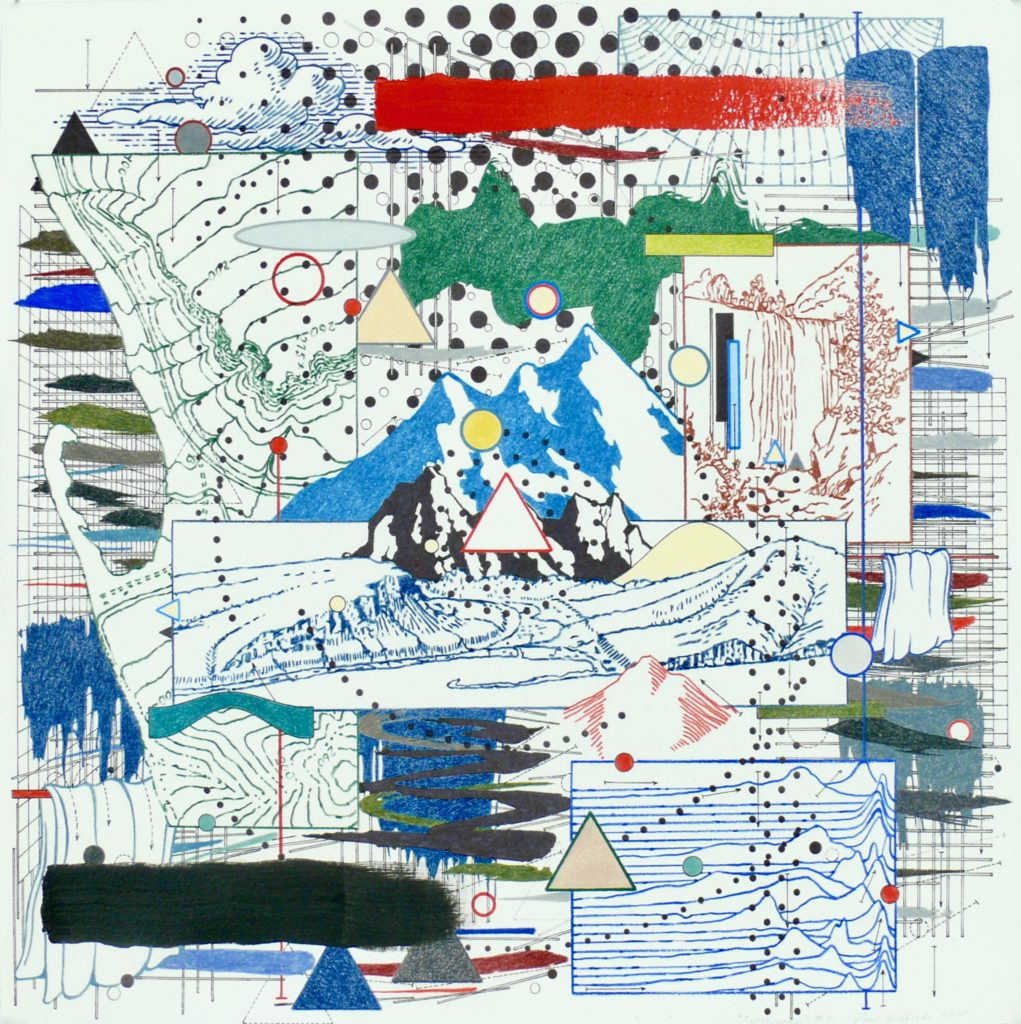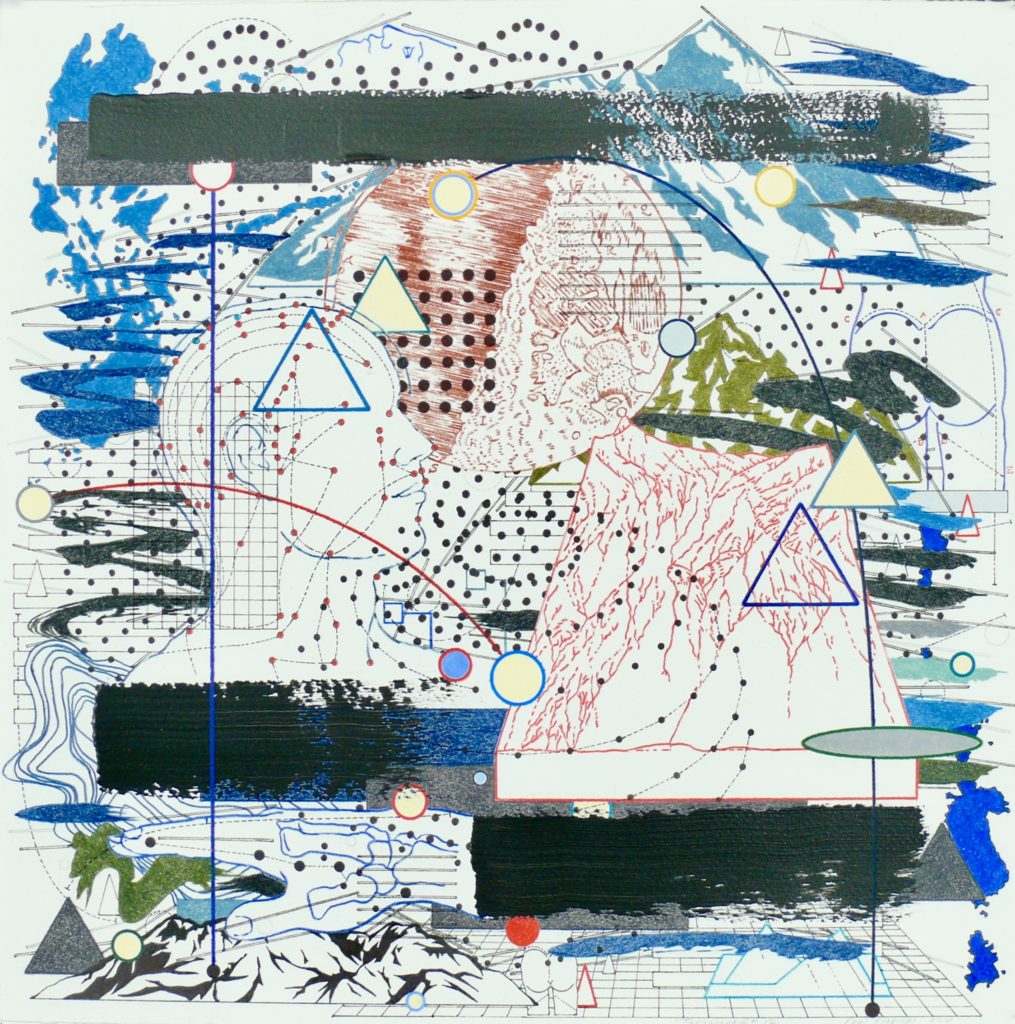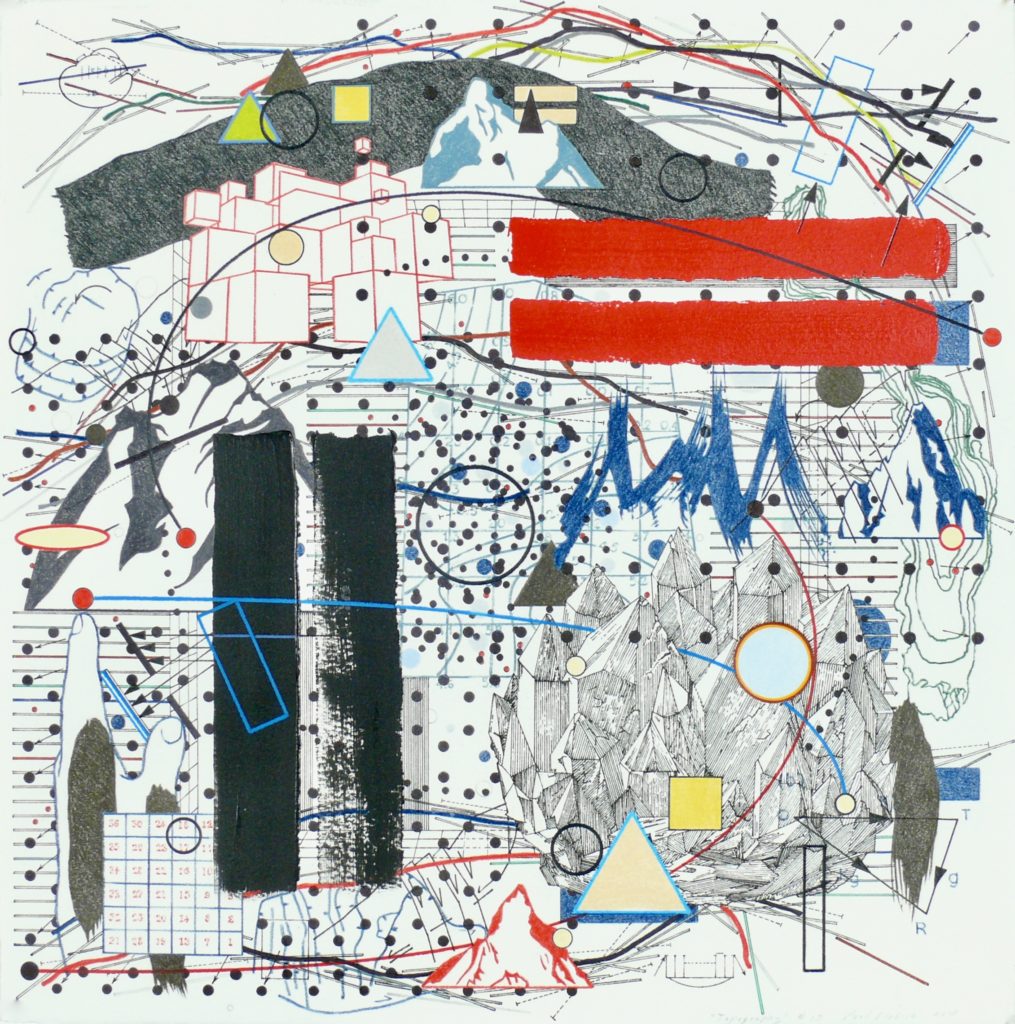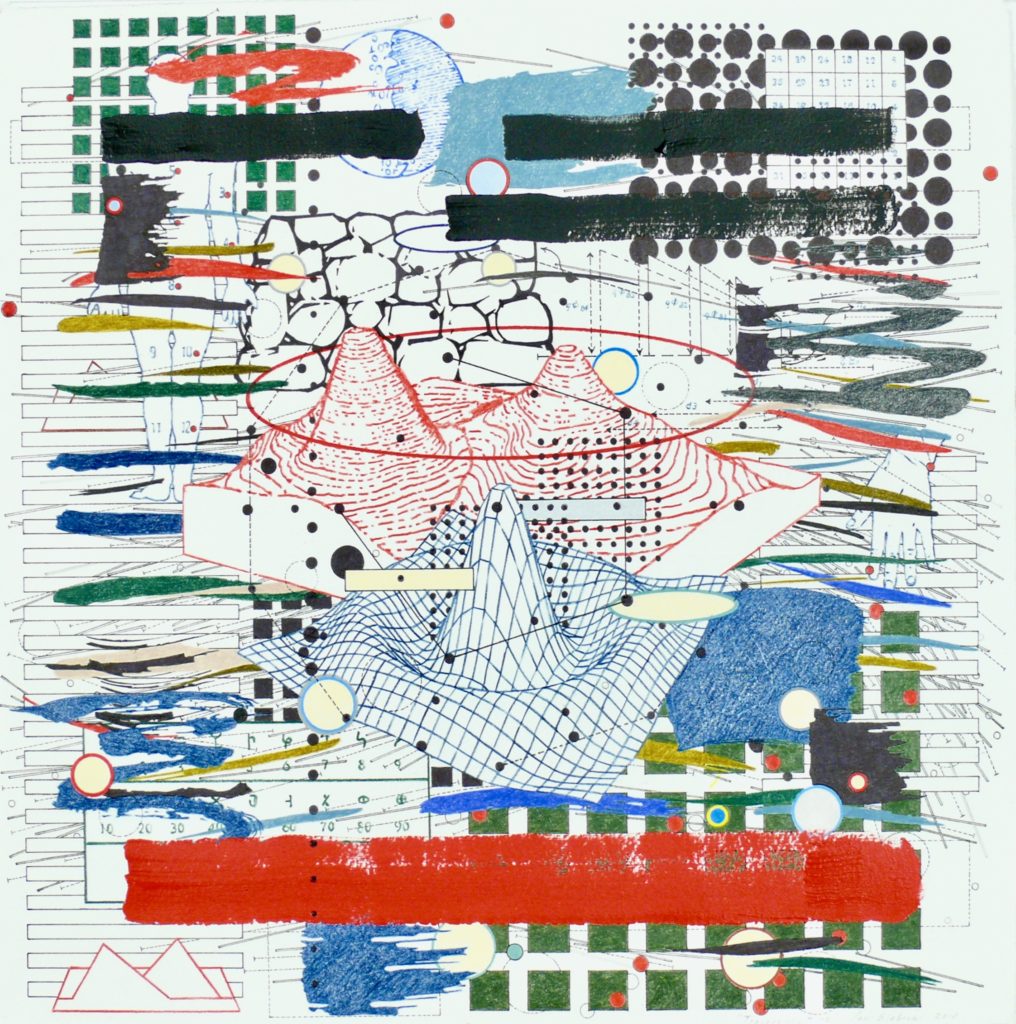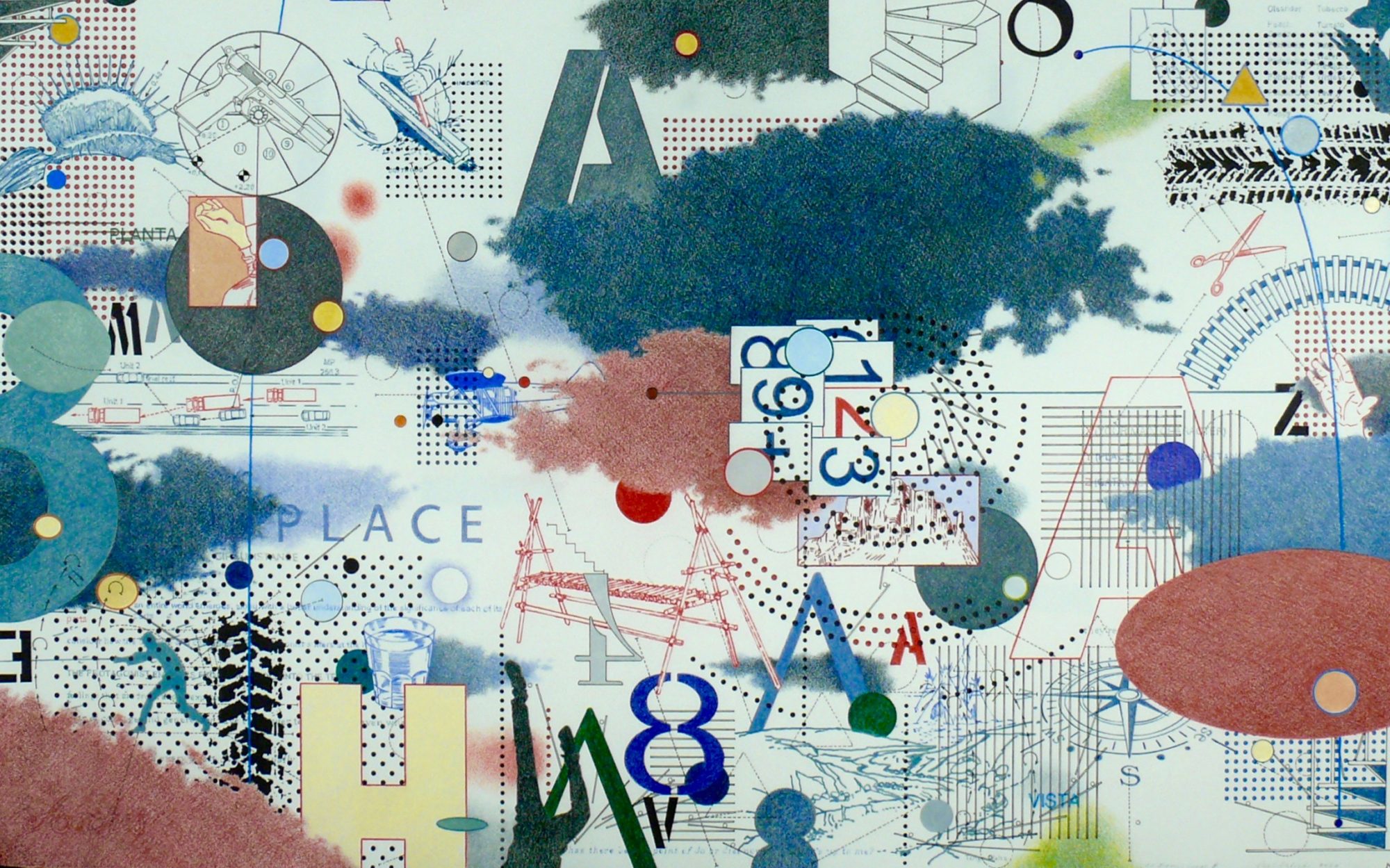From “Accounting For” series (2007 – 2010):
# 52:
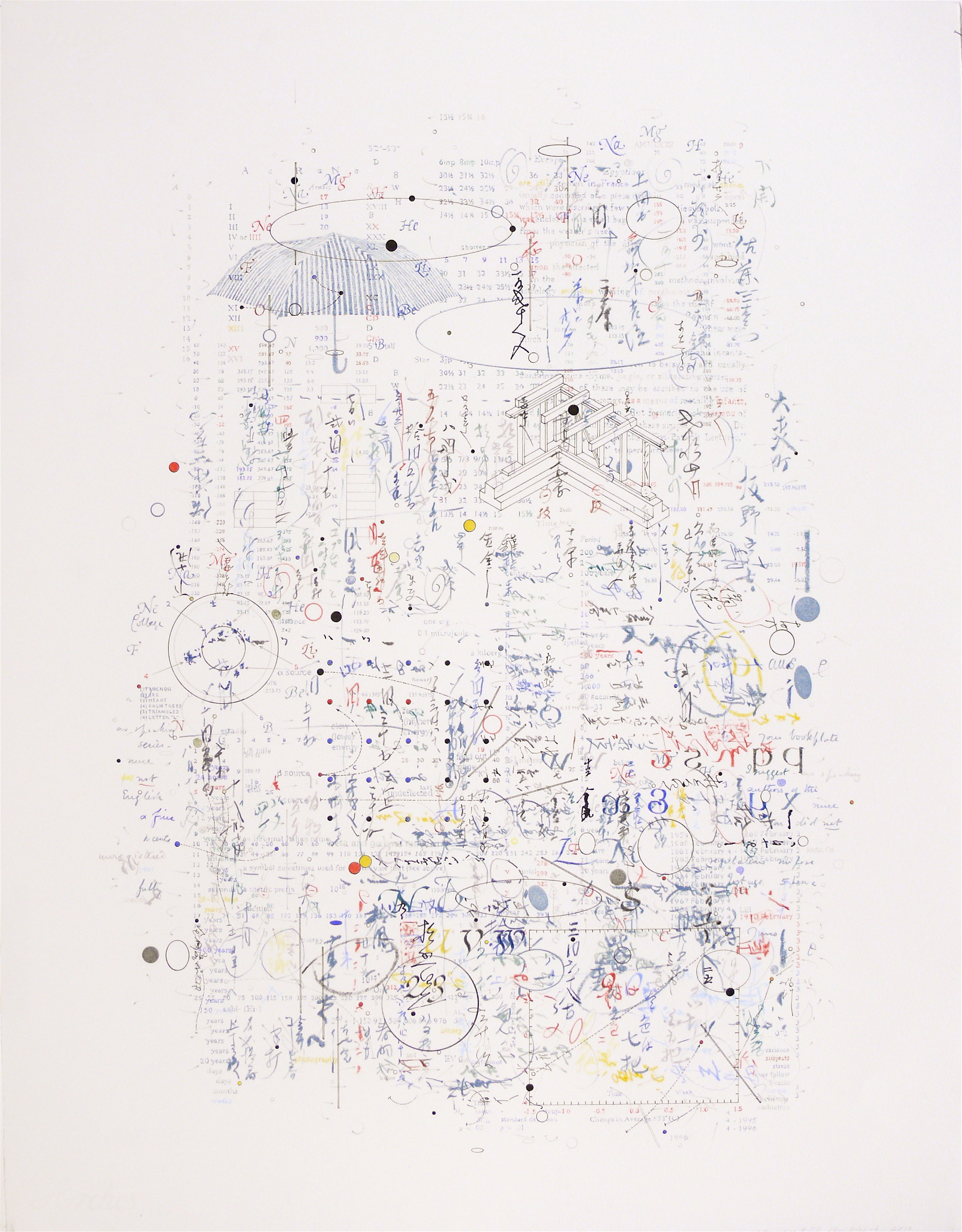
# 59:
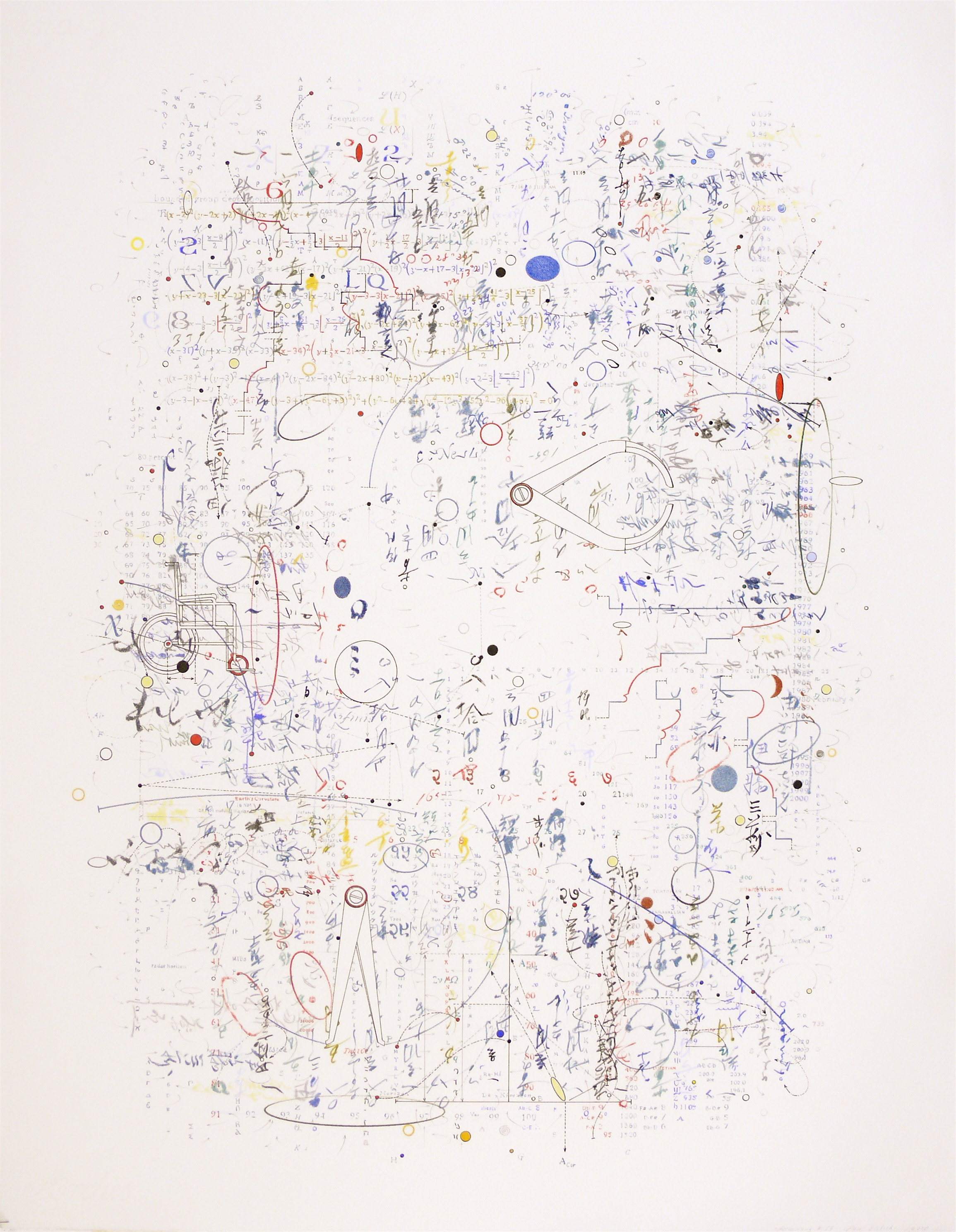
From the “Order” series (2011 – 2012):
#12: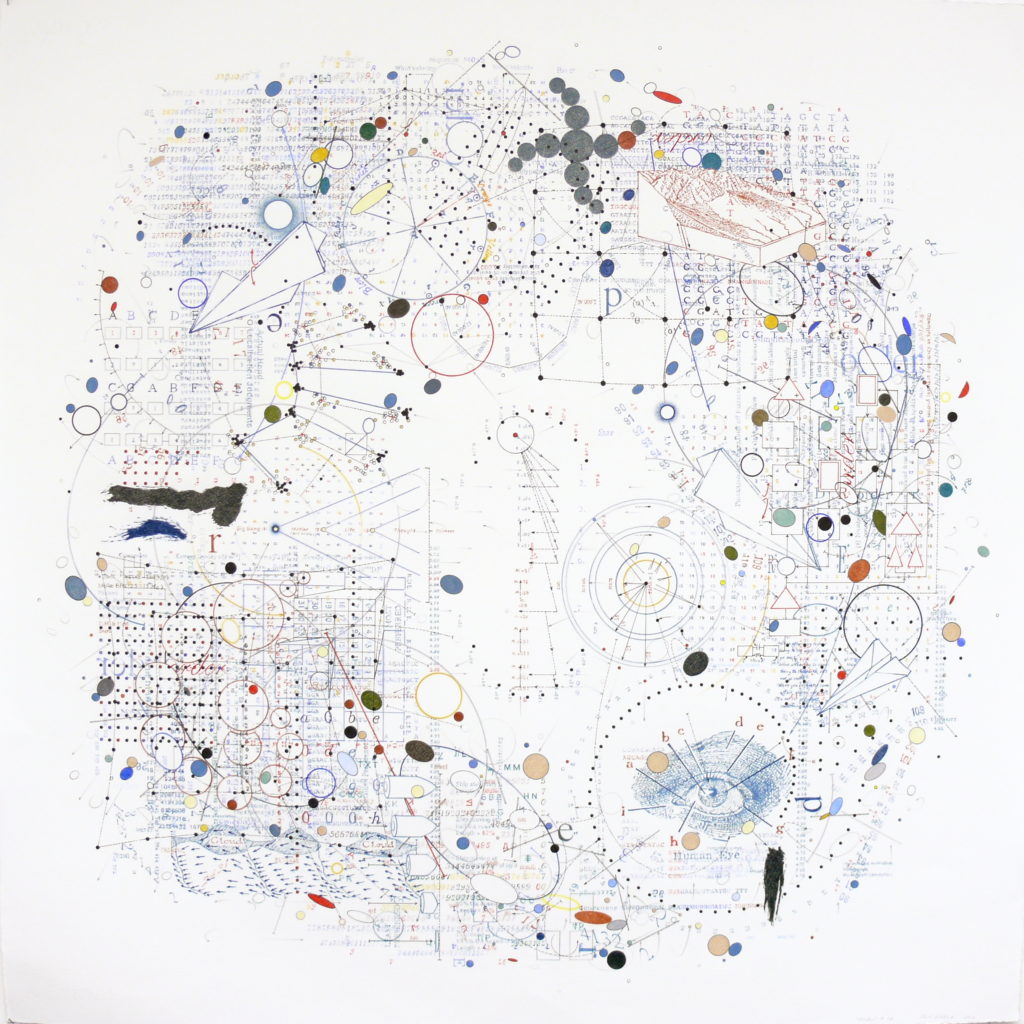
#13: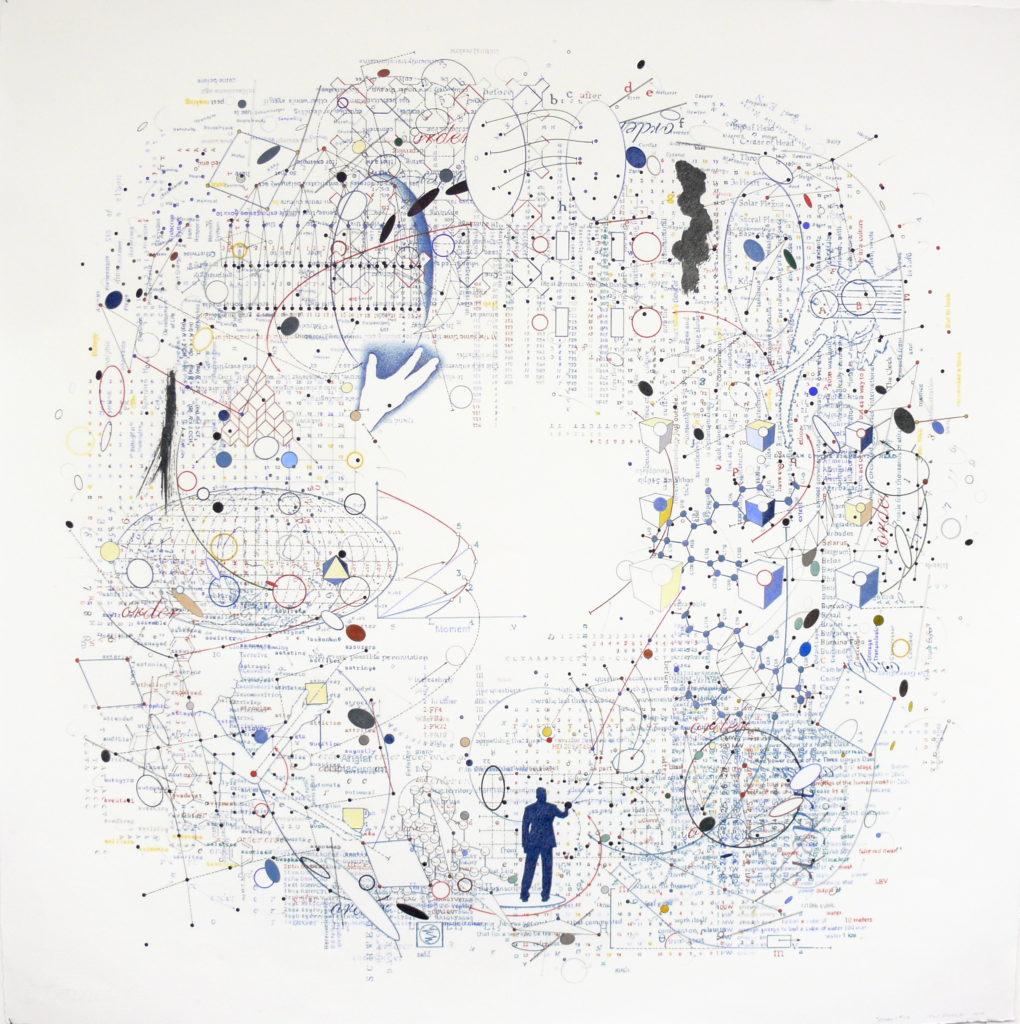
#2: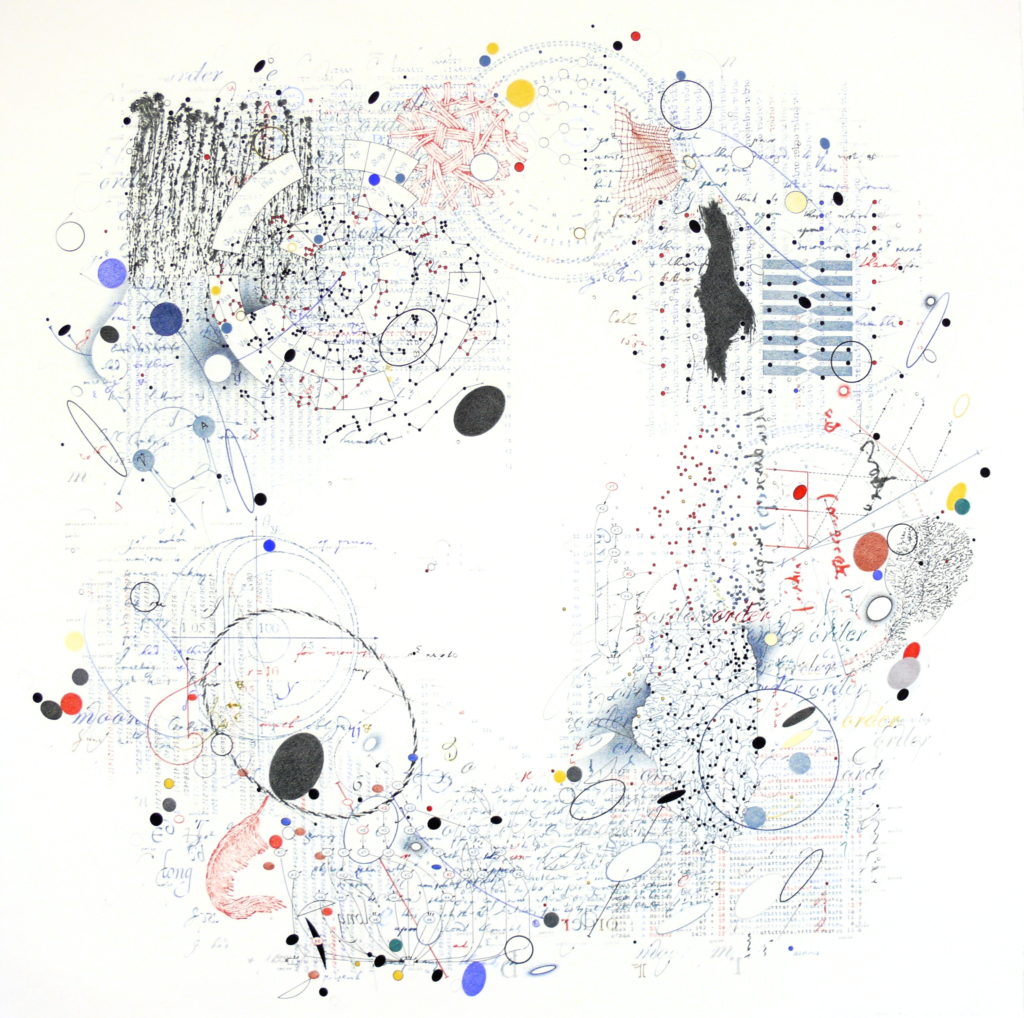
#1: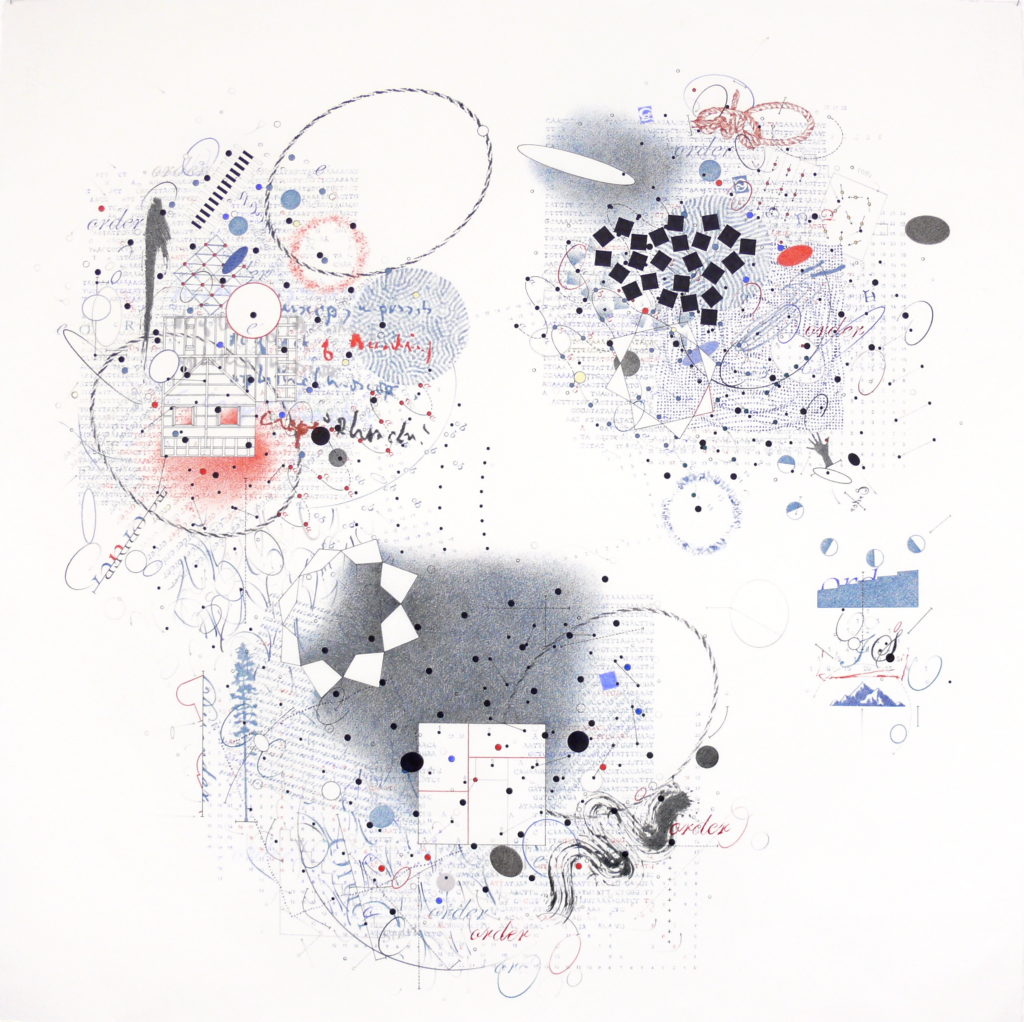
#15:
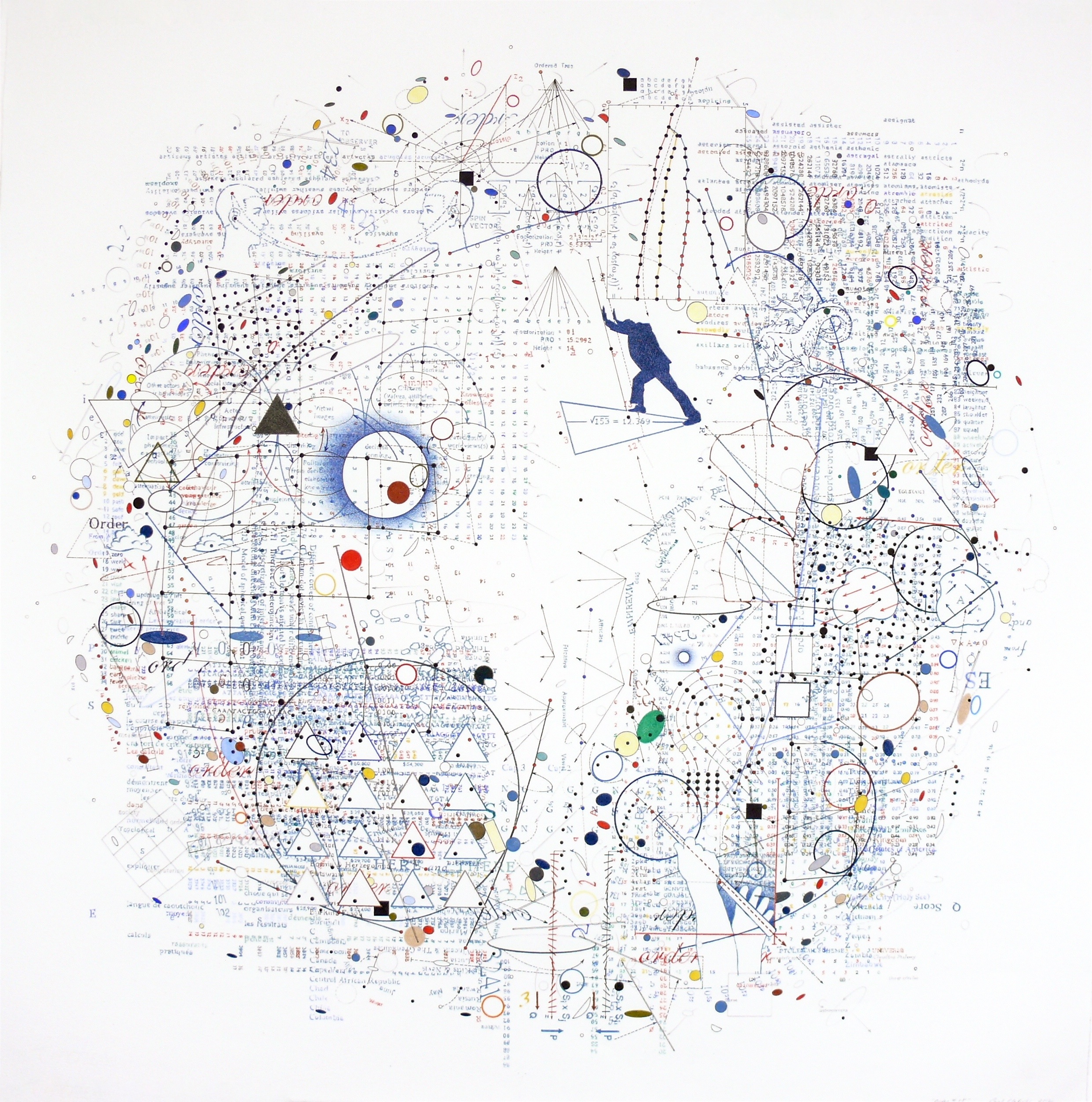
From the “Relativity” series (2012 – 2013):
#9: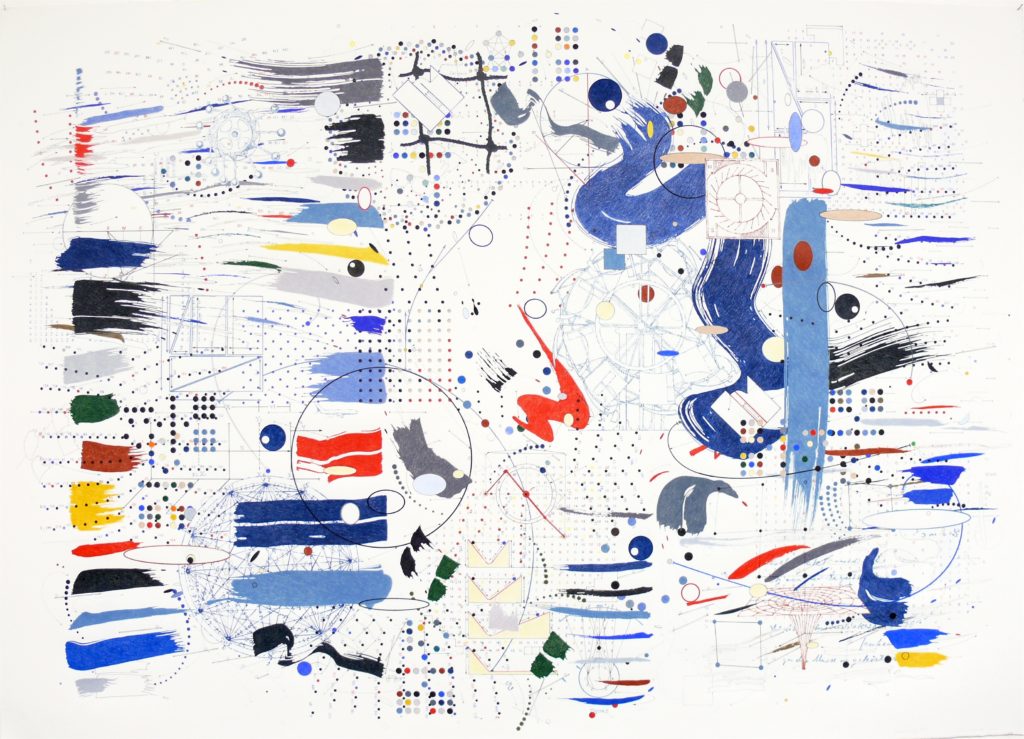
#2:
#1: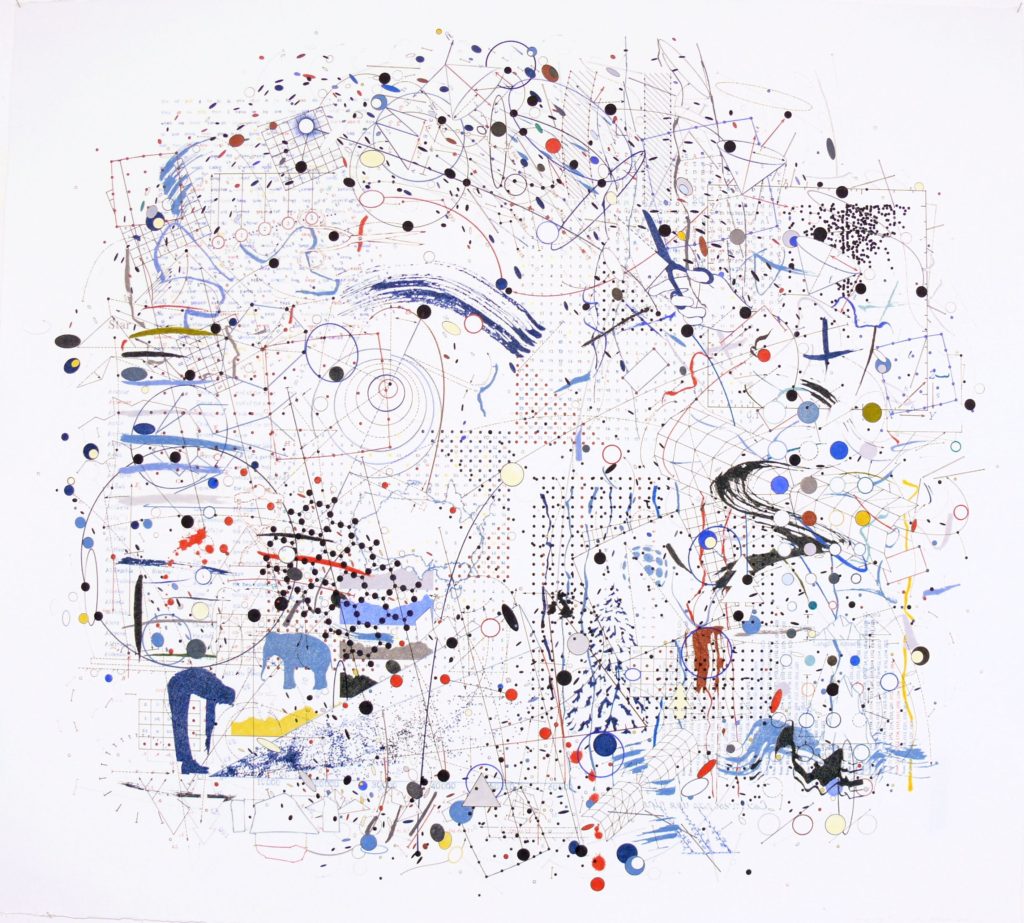
#4
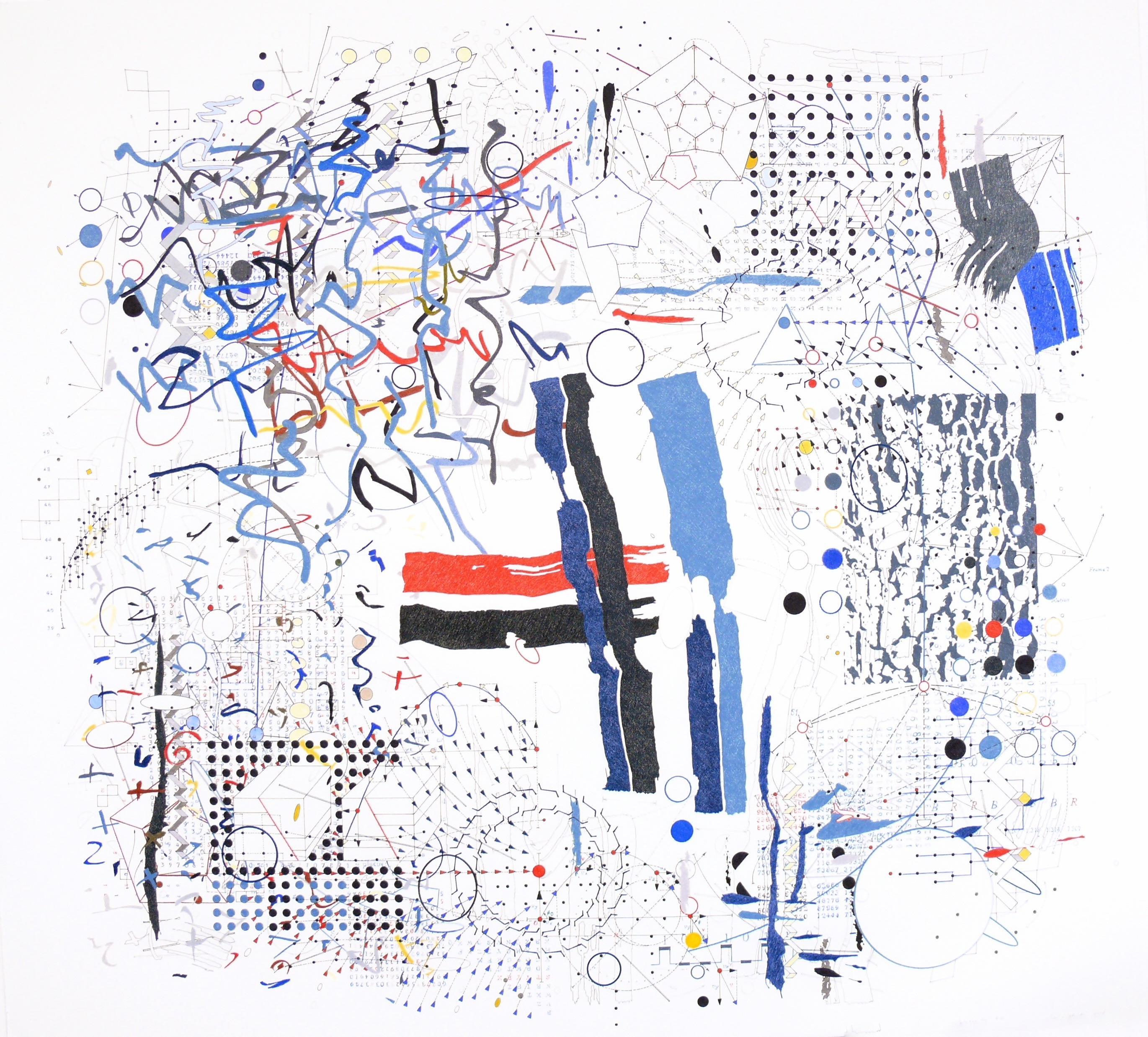
#5:
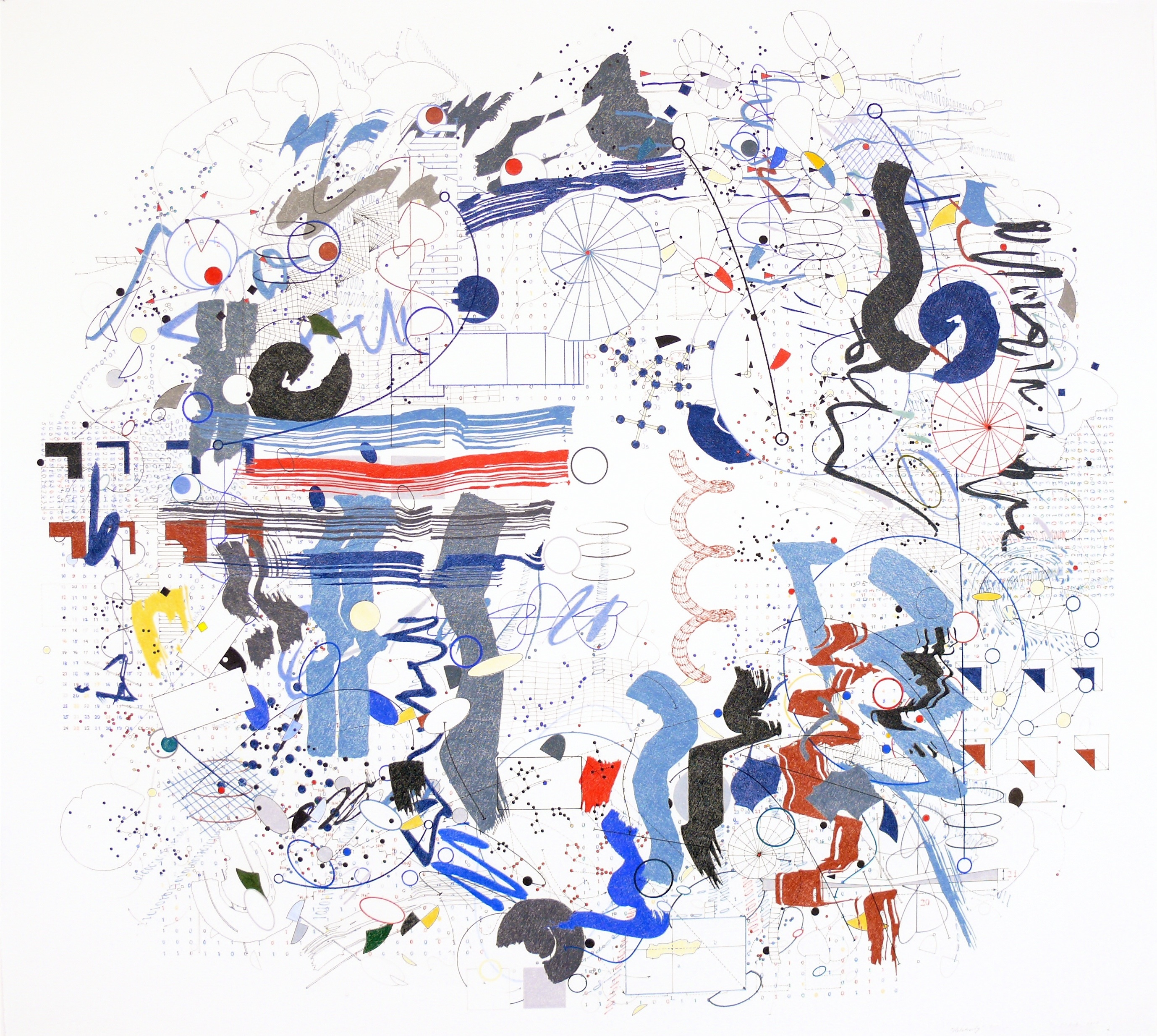
From “The Light” series (2014 – 2016):
#2:
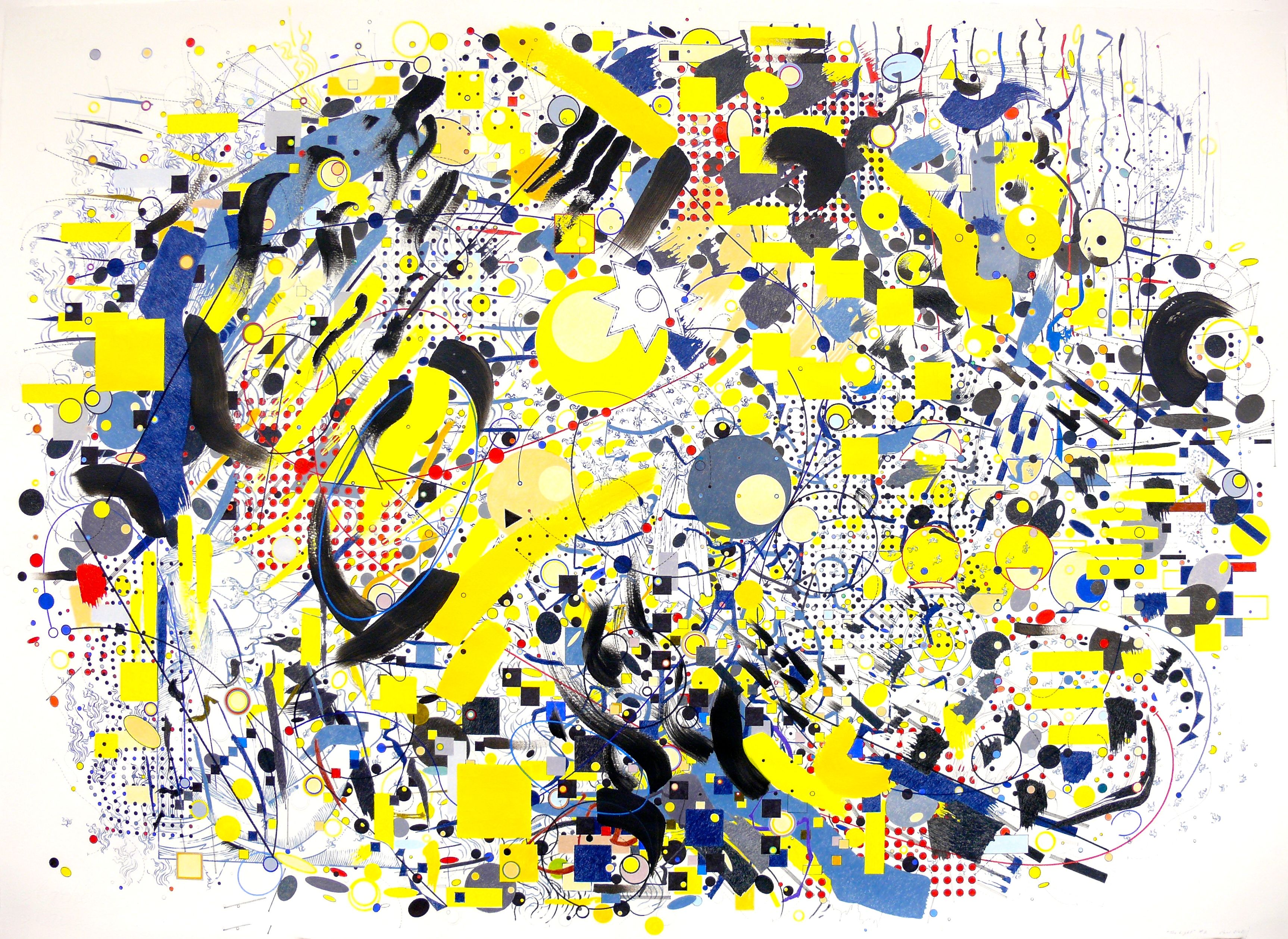
#6:
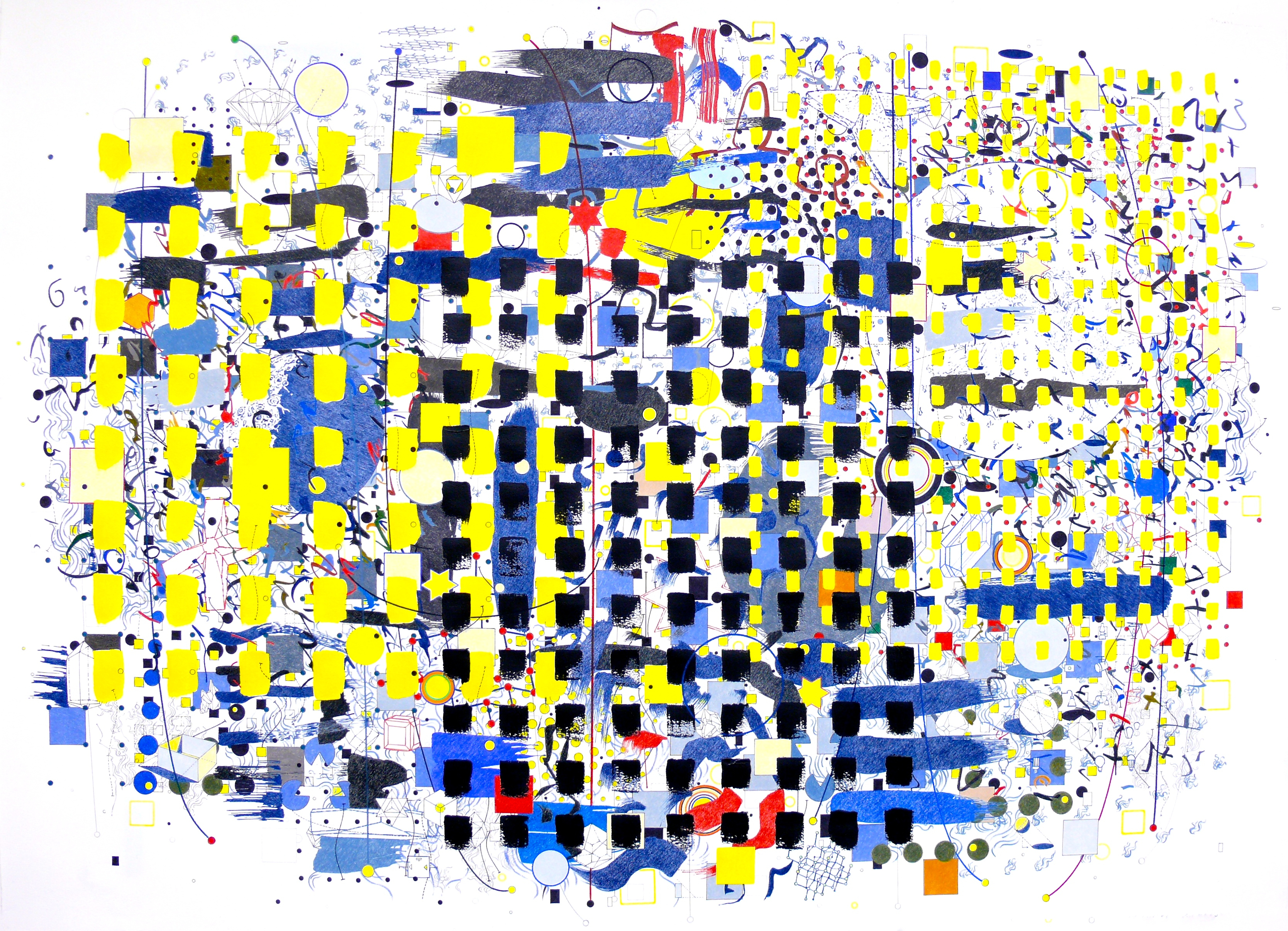
#7
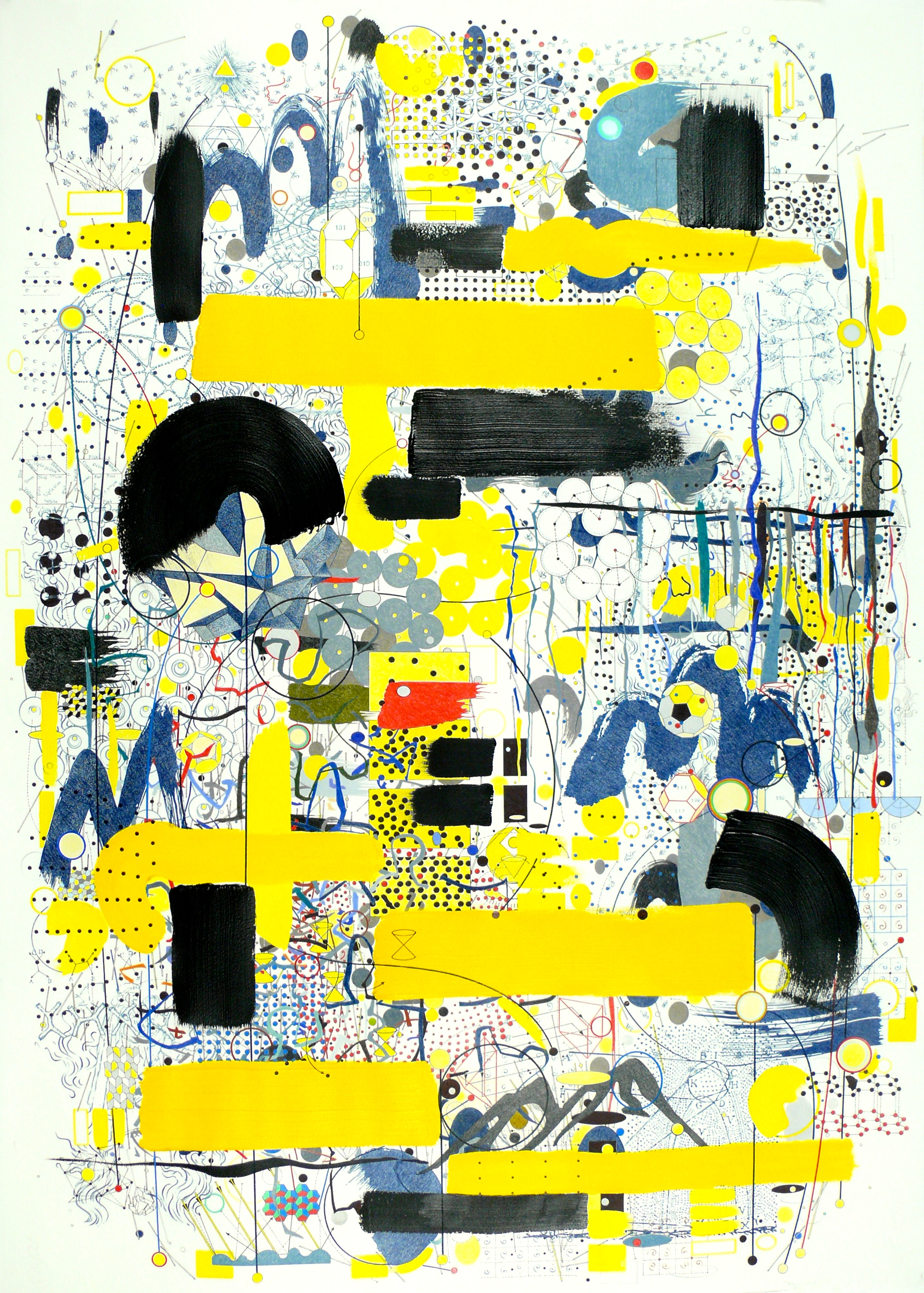
#8:

From the “Topography” series (2016 – 2018):
#1: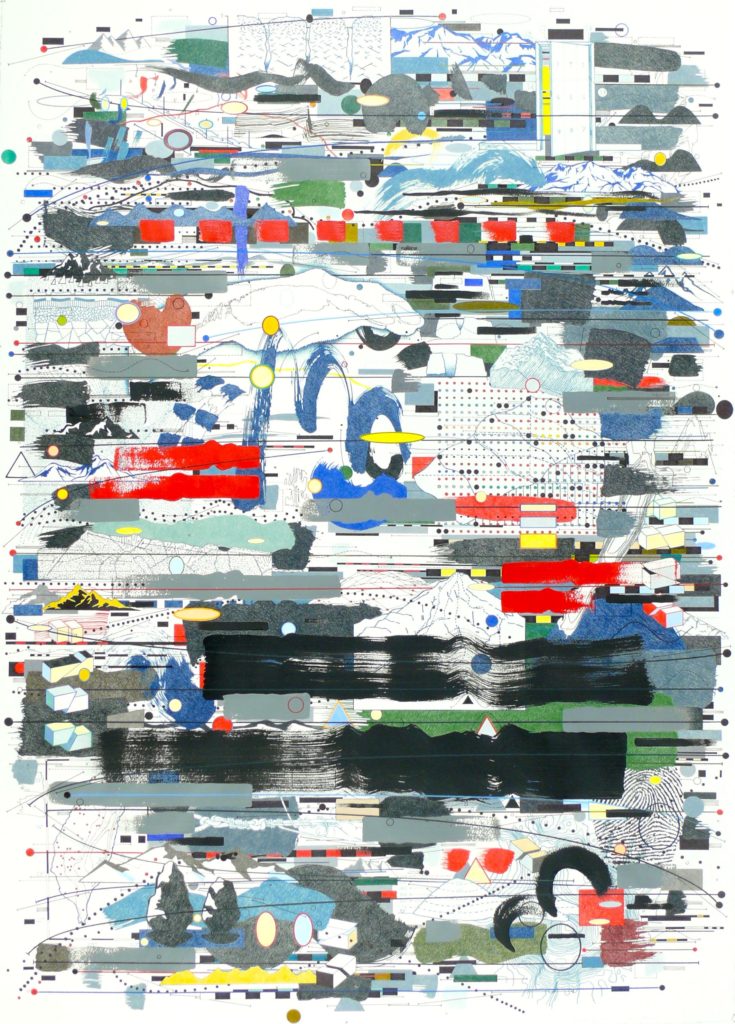
#2:
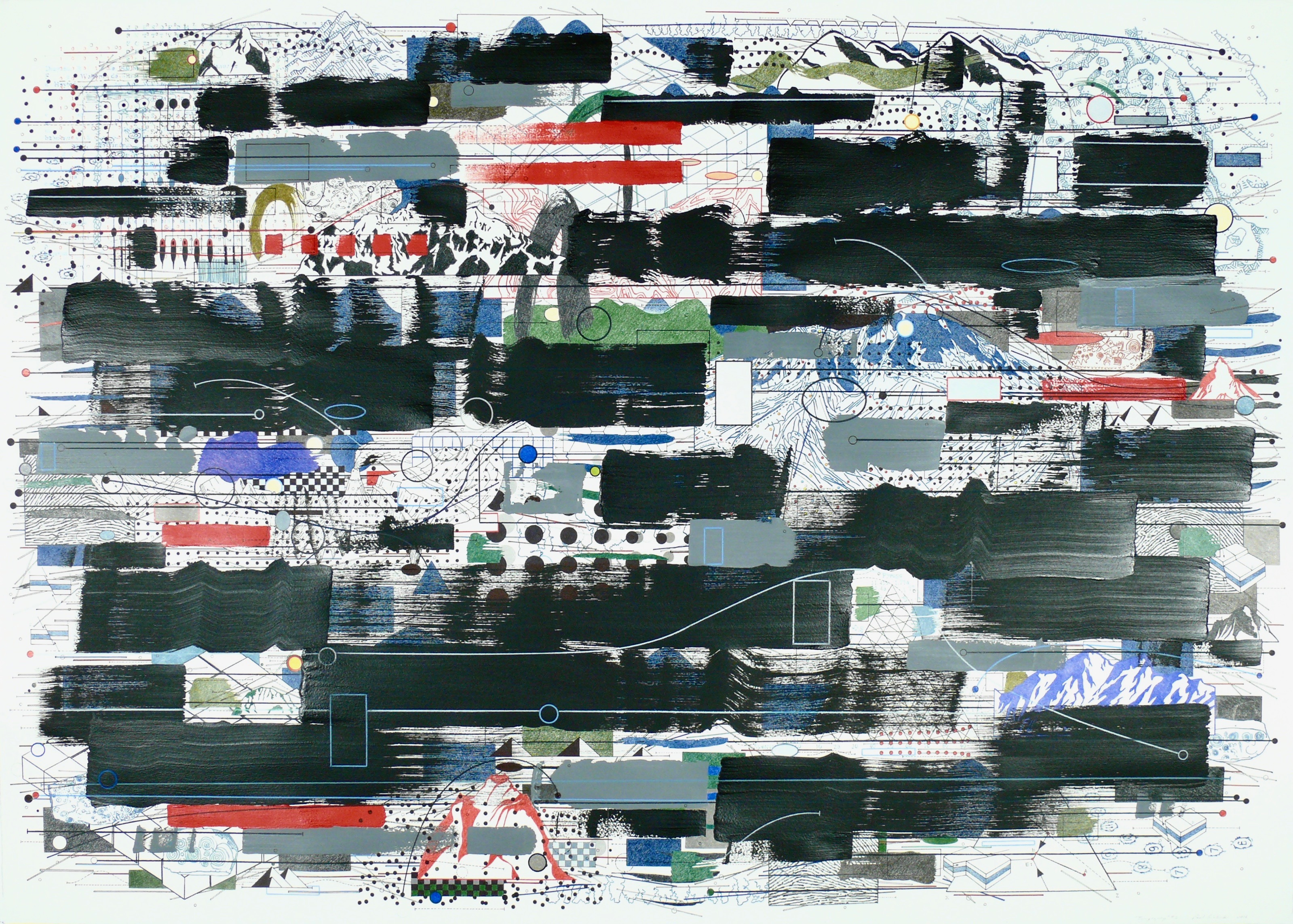
#5:
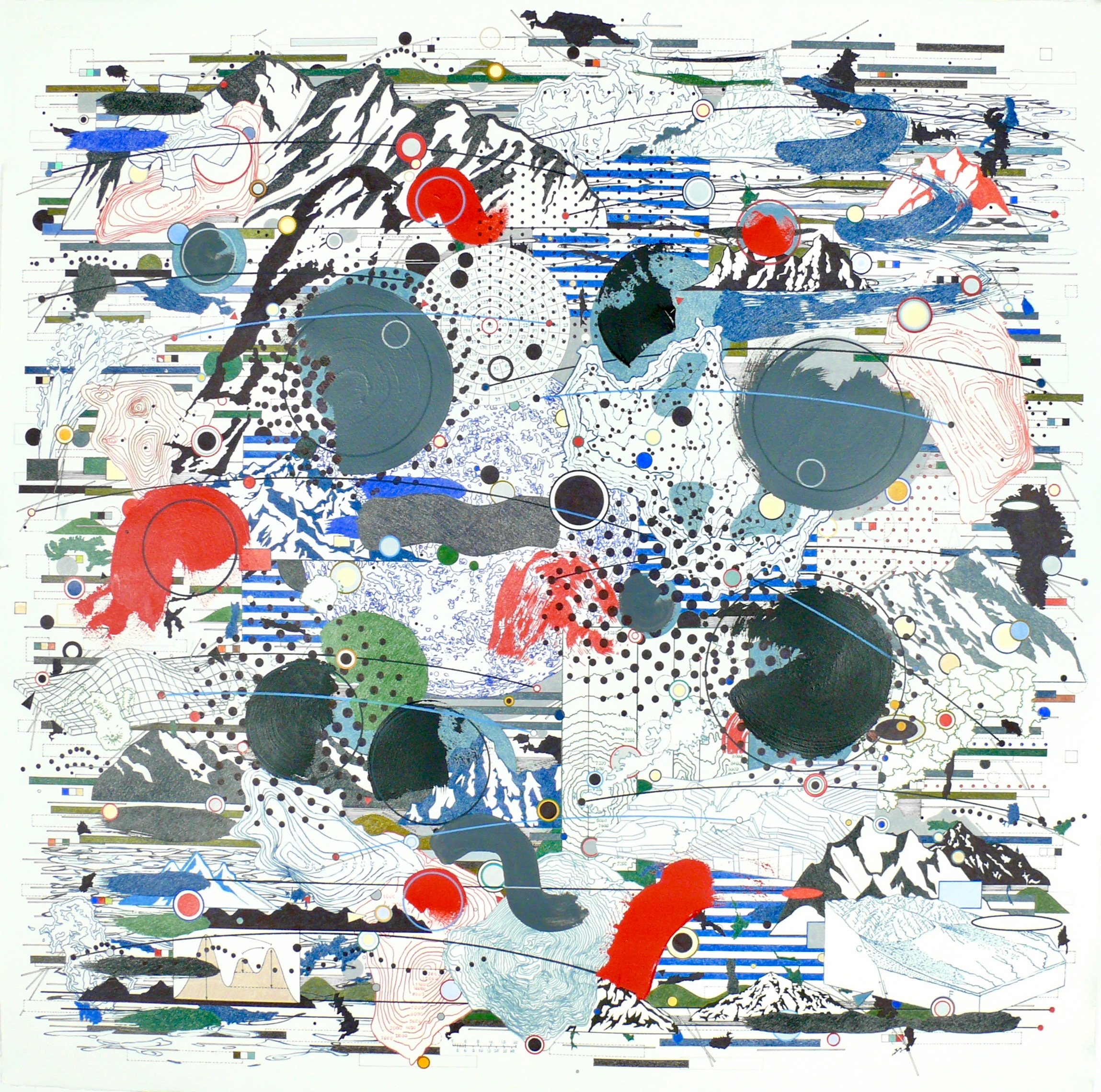
#7:
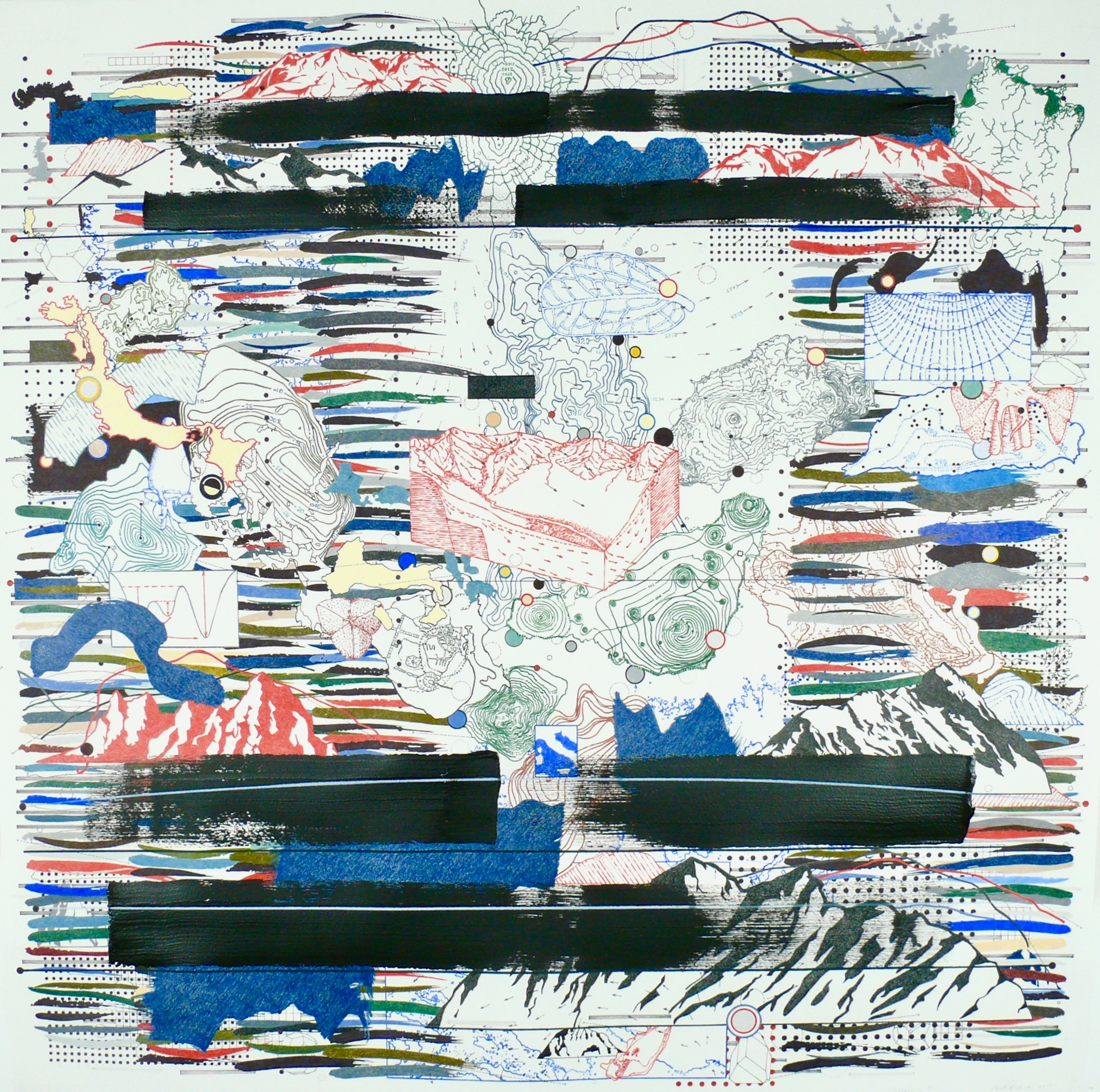
About the Drawing Series:
Concurrent with his work in animated film and video (1976-2001), Glabicki created drawing projects that evolved from a found image or object, travel experiences, photographs, or a conceptual theme. Each drawing series had a distinctive use of composition, color, and content, often combining or colliding abstract and figurative form – often quite different from his film projects. Often, these work employed mixed media: acrylic paint, pencil, ink, and prismacolor pencil on paper or canvas. After completing the computer animated video work “FULL MOON” in 2001, his work focused exclusively on drawing series projects, beginning with “ALL AT ONCE,” (2002-2006), a series generated by the book and actual transcribed text of “Synchronicity” by C.G. Jung, followed by “CODEX,” (2006-2007) a series inspired by illuminated manuscripts.
Other series, exhibited at Kim Foster Gallery since 2009, include:
“ACCOUNTING FOR” (2007-2010)
This series was structured on the transcribed pages of a handwritten 1930’s Japanese accounting ledger. Glabicki was interested in the ledger as a temporal object imbedded with meaning, function, mystery – recorded in time, and revealing patterns, rhythms and distinctive mark making over the duration of a year. The “ACCOUNTING FOR” series seeks to continue the ritual of the ledger, transcribing each page as a foundation and underlying structure for application of new information. Layered over and around each transcribed page are fragments of daily information that entered the artist’s life: letters, postmarks, internet searches, readings, observations, newspaper text, personal experiences and observation, research, film and TV, and more. The series continued until the final page of the original ledger had been transcribed, and Glabicki made his own final entry – resulting in 60 drawings.
“ORDER” (2011-2012)
In this series, relentless internet searches for the word “order” resulted in an ever expanding diversity of data – text, imagery, specific types and domains of “order” – from measurements, biology, botany, astronomy and other sciences, to statistics, commands, hierarchies, business forms, and more. Data was collected daily as content and form for each drawing. At the start of each drawing, imagery was added randomly. The paper was rotated, as additional data was included. A final viewing position was established as the accumulation of data revealed an orientation – or “order” – inherent in the compositional elements. The relentless search process produced ever more remote or eccentric results. The series ended when actual drawing images from the series (shared with friends on the internet), began to appear in search results, creating a conceptual loop and sense of closure to the two-year process.
“RELATIVITY” (2012-2013)
Readings on Albert Einstein’s theories of relativity provided a catalyst for this series. Einstein’s notions of time and space collide and interact with the artist’s own ongoing interest in time, simultaneity, semiotics, and multi-layered composition – complex images and visual information obsessively and systematically accumulated over time. Einstein’s theories are often conveyed by vivid imagery of simultaneous motion, comparisons of moving objects within confined spaces, time dilation and paradox, parallel observations, and comparative points of view – both intimate and vast. In this world, two events, simultaneous for one observer, may not be simultaneous for another. It’s a world that offers unfamiliar, surprising, but measurable complexity, and challenges our perception and orientation of order, time and reality – objectives that are, in many ways, shared by the artist. Each drawing in the RELATIVITY drawing series is a relentless accumulation of images, data, form and color progressively added in pairs – one element in relation and relative to another. The completed drawing becomes a unique configuration and multi-layered collage, a record and architecture of information and visual form constructed in pairs, at once simultaneous, mysterious, and, depending on the observations of the viewer, a multi-layered reality or record to be read, discovered and explored at each viewing.
“THE LIGHT” (2014-2016)
THE LIGHT drawing series explores notions of light in a variety of form, context, symbol, signification, and association. Sources, data and references – often presented and composed simultaneously – encompass the colliding worlds of science, religion, and art. From light as an elemental particle/photon, a measurable wave set in motion or shaped by forces of gravity, to spectral and spiritual phenomena, visual experience and component of color and color perception, or subjective/objective experience, each piece in the series evolves in complexity, juxtaposition, scale, optical play, and manipulation of data and medium. Botticelli’s spectral spirits (from his Dante’s Inferno drawings) share a multilayered compositional space with data on optics and quantum physics. Light (Yellow) is placed in stark contrast with dark (Black). Theories of Josef Albers collide with the theories of Albert Einstein. Particles of light and shape contrast spatially and in mass with gestural marks both real (actual paint/brush strokes) and simulated (drawn and replicated echoes). Like Glabicki’s previous drawing series, strategies of representation, abstraction, semiotics and language are at play, and a major mechanism and filter in selecting and composing thematic material and orchestration of information
“TOPOGRAPHY” (2016-2018)
Layering of imagery and information has been a recurring compositional strategy in all of the drawing series, as well as in Glabicki’s earlier animated film and video works. In the “TOPOGRAPHY” series, focus is on notions of surface and construction of spatial configurations. This is conveyed by use of materials on the surface of the paper – both real/physical (thick foreground brushstrokes of acrylic paint, bold overlay of line) and drawing manipulation and illusion (brushstrokes drawn with graphite or prismacolor pencil, overlap, mixed perspective of mountains and landscape). Actual topographical maps collide with diagrams of skin, rock crystals, reflective surfaces, geological data, shell surfaces, botanical illustrations, molecular form and geometry, the surface of the moon. A contour line drawing of the artist’s hand echoes the contour of a landscape. Stark contrasts of light and dark, color and black and white, bold and delicate detail, or solid and transparent form create something tactile and descriptive, while also creating a sense of ambiguity, tension, and gesture. Like the previous series, “TOPOGRAPHY” plays with thresholds and contrasts between figurative and abstract form, but it also deconstructs notions of landscape, surface, and spatial continuity.
